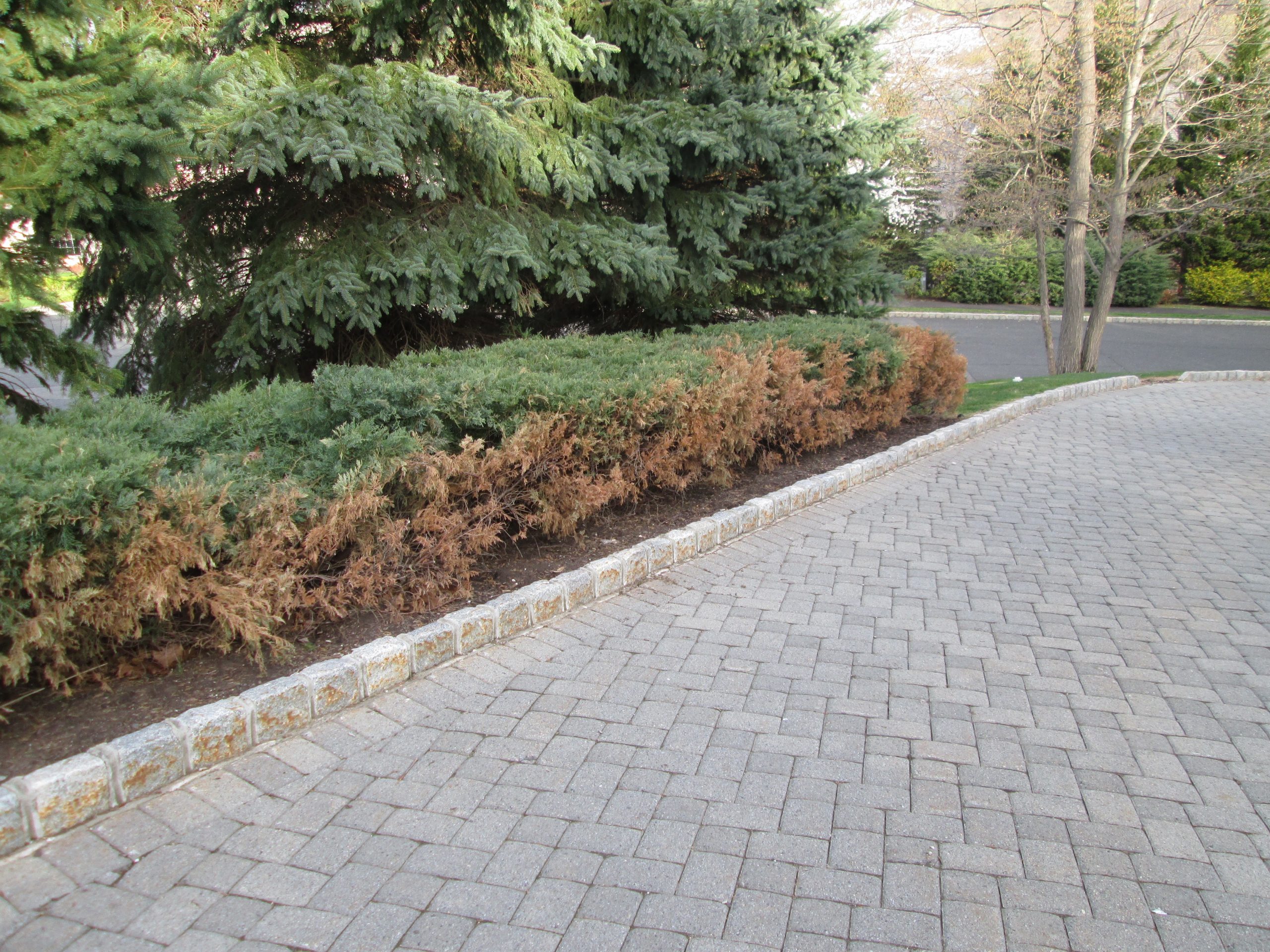Monthly Archives: January 2017
Salt Damage to Plants and Snow Removal Tips

Salt Damage to Plants
Each year, we apply more than 15 million tons of rock salt nationwide to help de-ice roads, walkways, and driveways. While the salt makes it much safer for us to travel in the winter, it is important to understand the impacts it can have on your lawn and landscape.
If you live on a busy road or salt your own driveway and sidewalk, you’re probably well aware of the salt damage to your lawn. When roads get salted by your town, they are most likely using rock salt, which is primarily made of sodium chloride. The salt works great for melting ice and making our roadways safer to drive on in the winter by lowering the freezing temperature of water. However, for your lawn, salt damages the turf primarily by drawing out the moisture (drying it out) and making it turn brown.
What many homeowners may not be aware of is that salt can also damage plants, trees and shrubs. Wind driven salt sprays from road trucks can travel up to 150 feet. Salt damage to plants can be extreme when it comes to pine, spruce and fir trees. Salt damage to evergreen plants causes the needles to brown from the tip to the base. Trees that lose their leaves each year may be damaged as well, but it will not be noticeable until the spring of the following year when the plants do not leaf out. If rain or snowmelt does not dilute excess salt placed on sidewalks or driveways, the soil becomes very salty and can damage the plants easily. A good tip to help prevent salt damage to plants is to learn to control where you are applying the rock salt. Avoid applications of rock salt directly into your lawn and landscape beds. Also, minimize applying rock salt to areas that will run off into your lawn and landscape.
Although you can’t control what gets applied to your street, there are some options that you can use on sidewalks and driveways to help minimize salt damage to plants and your lawn. Magnesium, Calcium, and Potassium chloride are all options that are more effective and safer for your plants, but come at a higher cost than rock salt. In addition, Magnesium, Potassium, and Calcium are all nutrients that are beneficial to your lawn and landscape plants in varying quantities. You can also try to improve traction by using sand or kitty litter. Some homeowners put up a burlap screen or snow fence along walkways and driveways to block salt from getting onto the lawn and preventing damage. If you do use rock salt this winter, try to minimize usage on your driveways and sidewalks, especially near the edges if possible to reduce salt damage to plants and turf.
It is very difficult to reverse salt damage to your plants, you might want to consider replacing the plants and some of the surrounding soil as an option. If your lawn is damaged, remove 4 inches of soil and reseed the areas.
Snow Removal Tips
This has to be near the top of every homeowner’s least favorite chore, unless you have a company come out to remove the snow for you! Whether you have a snow blower or shovel, you still have to bundle up in your snow gear and head out to deal with whatever mess Mother Nature has decided to give us. Prior to using any equipment this winter, make sure you follow a few steps to prepare. Inspect your shovels for cracks or breaks and replace if necessary before the first snowfall. If you have a snow blower, make sure you have the proper gas for the machine. It’s always a good idea to start the snow blower to make sure everything is working properly before the first snowfall. Speaking from experience, it’s never fun to find out your carburetor is clogged right after a large storm! Also be sure to check that oil levels are correct and the belts don’t have any breaks or cracks. If you find anything that needs repair, it’s better to have it done before you really need it.
When removing snow, you want to pay attention to where you are putting it. By just throwing snow out of the way, you may be adding additional snow onto your landscaping plants. The added weight of the snow can cause damage to those plants, potentially snapping branches or causing some plants to lean unnaturally. So the next time you are out there shoveling or snow blowing, pay attention to where the snow is piling up and try to avoid your landscape plants.
We know that snow removal from driveways, roads, and sidewalks is important, but don’t forget to also remove snow from your landscape plants to prevent injury. After each snow fall, spend a few minutes inspecting your landscape plants and do your best to brush off the snow if there is any heavy build up. Only remove the snow if it comes off easily, otherwise wait for warmer weather to melt it. You may end up doing more harm than good by forcing snow off the plants.
If you are in our service area and have any questions about salt damage to plants and turf, or snow removal advice, please feel free to contact us at 908-281-7888




